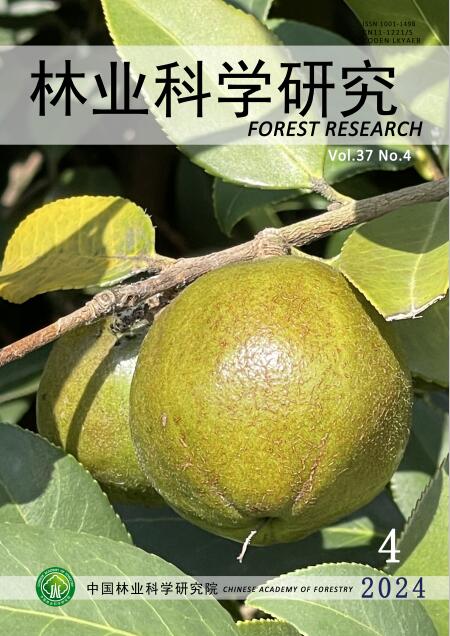Assessing the Role of Quality Thresholds on Early Performance of Tree Seedlings Planted on Degraded Highlands
Q4 Agricultural and Biological Sciences
引用次数: 1
Abstract
The present study highlights the effect of seedling quality on the resultant early performance of our planted tree seedlings. Four priority species tree seedlings: Cordia africana, Casuarina equisetifolia, Cupressus lusitania and Grevillia robusta were raised in the nursery using recommended substrate mixes of ratio (3% top soil: 2% manure: 1% sand). Seedlings were then sorted in to sturdiness quotient classes: quotient class one (I) comprising height to collar diameter ratio less than 6 and quotient class two (II) height to collar diameter ratio greater than 6 to compare early growth and survival among species and evaluate the significance of correlations between quotient categories and tree growth parameters on the degraded highlands of Yerer, Ethiopia. Two factor RCBD with three replications was used as an experimental design to handle eight factor combinations that resulted from four species types and two quotient classes. ANOVA indicated significant difference among tree species tested in the study area in terms of survival and early growth performances at P=0.05. Casuarina equisetifolia though its height and diameter performance in varying quotient categories was not statistically different it was found a priority species to establish plantation in the study area. The correlations between quotient categories and growth parameters were found statistically non-significant at P=0.05. Cupressus lusitanica and Grevellia robusta followed in the priority list to best adapt the site though the observed differences were not attributed to the anticipated variation in sturdiness quotient. Thus, the study results revealed that sturdiness quotient plays lower predictive role in early growth performances and survival of planted seedlings and it was found out to be a less rigorous quality parameter.质量阈值对退化高地树木幼苗早期生长性能的影响
本研究强调了幼苗质量对我们种植的树木幼苗早期性能的影响。采用推荐的基质配比(3%表土:2%粪肥:1%沙土)在苗圃中培育4种优先树种:非洲Cordia、木麻黄(Casuarina equisetifolia)、卢西塔柏树(Cupressus lusitania)和robusta。在埃塞俄比亚耶勒退化高地上,将幼苗分为结实商类:商类1 (I)(高颈径比小于6)和商类2 (II)(高颈径比大于6),比较物种间的早期生长和存活,并评价商类与树木生长参数之间相关性的显著性。采用3个重复的双因子RCBD作为实验设计,处理4种物种类型和2个商类产生的8个因子组合。方差分析结果显示,研究区不同树种的成活率和早期生长性能差异显著(P=0.05)。木麻黄的高、径在不同商数分类中的表现差异无统计学意义,是研究区内优先建立人工林的树种。商类与生长参数之间的相关性P=0.05,无统计学意义。尽管所观察到的差异并不是归因于预期的结实商的变化,但卢西塔尼松和罗布斯塔在优先级列表中紧随其后,以最好地适应场地。因此,研究结果表明,结实商对苗木早期生长性能和成活率的预测作用较低,是一个较不严格的质量参数。
本文章由计算机程序翻译,如有差异,请以英文原文为准。
求助全文
约1分钟内获得全文
求助全文
来源期刊

林业科学研究
Environmental Science-Ecology
CiteScore
0.90
自引率
0.00%
发文量
4834
期刊介绍:
Forestry Research is a comprehensive academic journal of forestry science organized by the Chinese Academy of Forestry. The main task is to reflect the latest research results, academic papers and research reports, scientific and technological developments and information on forestry science mainly organized by the Chinese Academy of Forestry, to promote academic exchanges at home and abroad, to carry out academic discussions, to flourish forestry science, and to better serve China's forestry construction.
The main contents are: forest seeds, seedling afforestation, forest plants, forest genetic breeding, tree physiology and biochemistry, forest insects, resource insects, forest pathology, forest microorganisms, forest birds and animals, forest soil, forest ecology, forest management, forest manager, forestry remote sensing, forestry biotechnology and other new technologies, new methods, and to increase the development strategy of forestry, the trend of development of disciplines, technology policies and strategies, etc., and to increase the forestry development strategy, the trend of development of disciplines, technology policies and strategies. It is suitable for scientists and technicians of forestry and related disciplines, teachers and students of colleges and universities, leaders and managers, and grassroots forestry workers.
 求助内容:
求助内容: 应助结果提醒方式:
应助结果提醒方式:


